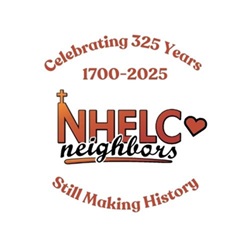See Also: Overview | 1700-1799 | 1800-1899 | 1900-Present | Timeline of our Pastors

Significant watermarks during the 20th century include the complete renovation of the sanctuary in 1905. A basement excavation made possible a new heating system, new floors, new furnishings for the nave, a change from colonial to stenciled walls and ceiling, and woodwork finished with simulated graining. Beautiful stained glass art windows were installed. The artist was Fred Reith of Philadelphia. Today the widows are considered irreplaceable art treasures.

The German language was primarily used up until 1917 (World War I). The first English Communion service was held on March 17, 1917. From that year on, English gradually supplanted the use of German in this oldest German Lutheran Church in America.
A new phase in the life of the congregation began in 1945. The end of World War II opened the door to many changes. Dr. John J. Kline retired after a long and distinguished pastorate of sixty years (1886-1945).
Rev. Edgar M. Cooper, ordained by the Ministerium of Pennsylvania in October, 1945, began his pastorate on December 1, 1945. For the next forty-seven years this pastoral relationship with New Hanover Church continued (1945-1992). The congregation was served by two pastors for a period of one hundred seven years. Pastor Cooper was the first non-German to serve this historic German congregation.

The post-war years brought many changes to this rural area. The first new home built in the township for many years was a new parsonage completed in 1948. New homes and a steady increase in population were reflected in congregational growth.
A new Memorial Parish house was completed in 1951. A large annex was added in 1957. Service organizations for every age group were active including the women’s Missionary Society, the Men’s Brotherhood, the Sunday school, choirs, for all ages, a full Scouting program for boys and girls, Camp Falckner began in 1962 and continues to the present. The Altar Guild provides immeasurable help in regards to worship, decorating the church, and the care of altar accessories. The Quilters met weekly for many years up until recent years.
The Great Swamp Picnic, its origin ancient but not documented, has been an annual summer event throughout the 20th century. It was the great social event of the year for young and old. It has featured speakers, prominent bands, various musical groups and food from picnic baskets to church vendors serving the hundreds of people in attendance.

The church sanctuary was completely transformed again in 1969 to the Greek Revival (colonial) style. Chancel furnishings, pews, walls, and woodwork were painted white; a new period chandelier and rose carpet were installed.
A steady stream of youth of the congregation entered adult lives of service locally and in other communities. David Pflieger, Rebecca Swavely, and Robert Williams were members of the congregation who were ordained as ministers of the Gospel.
Other changes during the 20th century should be noted as influences upon the congregation. These would include such developments as rural electrification, indoor plumbing, paved highways, the twenty year reign of the trolley car, and the family automobile. The last horse shed at the church was removed in the 1940’s.

See Also: Overview | 1700-1799 | 1800-1899 | 1900-Present | Timeline of our Pastors
